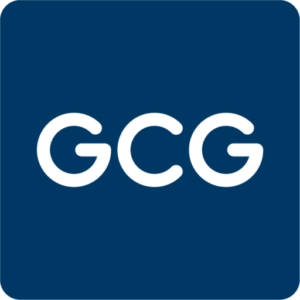
GCG Leadership Development Team
From Insight to Discipline
By now, it’s clear that strategic thinking isn’t an occasional long-term exercise — it’s a habitual discipline practiced over the long term. It doesn’t come from a single whiteboard session or keynote. Like any muscle — one that atrophies when ignored and strengthens with intentional practice.
This third installment in our Strategic Leadership Journey series shifts the focus from the “what” and “why” of strategic thinking to the “how.” If you’ve ever walked out of a strategic leadership retreat inspired to think differently but found yourself back in reactive mode within a week, you’re not alone. The gap between aspiration and execution is real — and it’s precisely where strategy must be cultivated.
In this article, we’ll explore the practices that help leaders develop strategic depth over time — not by stepping away from the business, but by engaging with it more deliberately.
Previous posts in this series laid the groundwork:
- Strategic Thinking Is a Superpower — Here’s How to Develop It
- The Strategic Leader’s Dilemma: Navigating Complexity and Uncertainty
Now, we move into discipline — into craft.
The Myth of the “Natural” Strategic Thinker
There’s a lingering misconception that strategic thinking is innate — that certain leaders are born with a knack for vision, foresight, and systems-level insight.
But what we see consistently in leadership coaching — and across tens of thousands of GCG engagements — is that strategic excellence is learned. It’s a pattern of behavior shaped by how leaders think, where they focus, and who they involve.
Yes, some leaders may lean more intuitively toward long-term thinking or abstraction. But sustained strategic clarity? That’s built.
And it’s built through rhythm, reflection, and reframing.
The Strategic Leader’s Weekly Practice
Strategic thinking happens over time — not just in time. That means leaders must design their workweek in a way that doesn’t just permit strategic thought, but actively encourages it.
The best leaders don’t wait for “white space.” They create it. Here are five weekly practices we’ve seen make the difference:
- Strategic Calendar Design
Start with time. Allocate 90–120 minutes per week for strategic work. This is not for slide creation or budget review — it’s for exploring what’s changing, what’s emerging, and what you’re not yet seeing. Some leaders use this time for “pattern mapping,” others for journaling or coworker interviews. The format matters less than the consistency. - Deliberate Questioning
In every major conversation — whether with your team, a peer, or your coach — bring one forward-looking question. For example:
- What’s the assumption here that we haven’t tested?
- How does this decision affect us two quarters from now?
- What might our customers need from us a year from today?
Strategic leaders use questions not to slow things down, but to open up better options.
- Coworker-Driven Feedforward
We talk often at GCG about the power of involving coworkers not just as feedback sources, but as strategy collaborators. Invite their input not just on performance, but on direction. “What am I missing?” or “Where do you think we’re overinvesting and underinvesting?” are simple, powerful ways to engage the strategic intelligence already within your team. - Scenario Thinking in Real Time
Strategic thinking isn’t only about vision — it’s about anticipating variation. One GCG client, a COO in financial services, closes each team meeting with “future echoes”: three short scenarios that force the team to think across timelines. Not full forecasting, just: “If X happened, how might we respond?” This keeps the muscle active. - Linking Priorities to Purpose
Every week, revisit your top three active priorities and ask: “How do these connect to our long-term outcomes?” If the link is weak, either the activity needs to shift — or the strategy does.
This is not just tactical alignment. It’s clarity. And clarity is a strategic act.
Tools That Strengthen Strategic Thinking
Practice is vital — but tools help too. In coaching, we often introduce frameworks that support leaders in surfacing assumptions, revealing patterns, or generating better questions. Here are a few that consistently generate value:
- Time-Horizon Mapping
A deceptively simple tool: lay out current initiatives on a timeline (next 30 days, 90 days, 1 year, 3 years). Then ask: what’s missing in the long term? What’s over-concentrated in the short term? Most organizations are not short on activity — they’re short on balance. - Strategic Choice Cascade
Popularized by strategy leaders like Alan Lafley and Roger Martin, this model invites leaders to clarify:
- What is our winning aspiration?
- Where will we play?
- How will we win?
- What capabilities do we need?
- What systems support them?
We’ve adapted this at GCG for individual leaders — a tool not just for corporate strategy but strategic leadership focus. It turns vague ambition into structured direction.
- Signal Journal
Strategic thinkers are expert observers. One practice that consistently shows results: keep a weekly “signal journal.” Capture market headlines, internal changes, competitive shifts, and anecdotal data. Over time, patterns emerge — and those patterns become your edge.
What Coaching Adds
Practicing strategic thinking is one thing. Having a space to reflect on that practice — and to be challenged — is another.
At GCG, we’ve seen leaders exponentially grow their strategic capacity when coaching is integrated not as a fix-it mechanism, but as a thinking partnership. Coaches help leaders:
- Separate signal from noise
- Test hypotheses before they harden into plans
- Involve coworkers in framing, not just feedback
- Reflect on not just what they’re doing, but how they’re thinking
Coaching adds structure to reflection, and pressure-tested tools to exploration. But perhaps more than anything, it adds accountability to staying strategic — even when the noise gets loud.
Conclusion: Strategy as a Leadership Habit
Strategic thinking doesn’t arrive in a flash of insight. It’s built through repetition, provocation, and discipline.
Leaders who cultivate this practice aren’t just more visionary — they’re more grounded. They understand not only where they want to go, but what needs to happen now to get there. They lead with both altitude and clarity.
In the next post, we’ll explore what defines a strategic leader on the inside — the traits, mindsets, and behavioral signatures that set them apart.
Because practice is essential. But so is identity. And strategic leadership is about both.
The Strategic Leadership Journey — Read the Series:
- Strategic Thinking Is a Superpower — Here’s How to Develop It
- The Strategic Leader’s Dilemma: Navigating Complexity and Uncertainty
- Cultivating Strategic Thinking: Tools and Practices for Leaders
- Traits of Strategic Thinkers: The DNA of Visionary Leadership
- Legendary Leader Series: The Strategic Brilliance of Satya Nadella
At Global Coach Group (GCG), our network of over 4,000+ experienced coaches is dedicated to delivering tailored leadership coaching to help leaders become more self-aware, improve their communication strategies, and ultimately drive better team performance.
For leaders who want to become coaches or coaches looking to enhance their leadership coaching skills, Global Coach Group (GCG) provides a comprehensive leadership coaching certification program. GCG’s internationally acclaimed coaching tools and resources can help you improve your coaching proficiency and empower you to guide others.

GCG Leadership Development Team
Learn about the GCG's Coaching Tools
Measurable results, in LESS Time.
Reduce your session prep and follow-ups to just 15 minutes, while delivering coaching that improves leadership, team and business performances with 95% coworker satisfaction
